Using the Expressway in Hokkaido
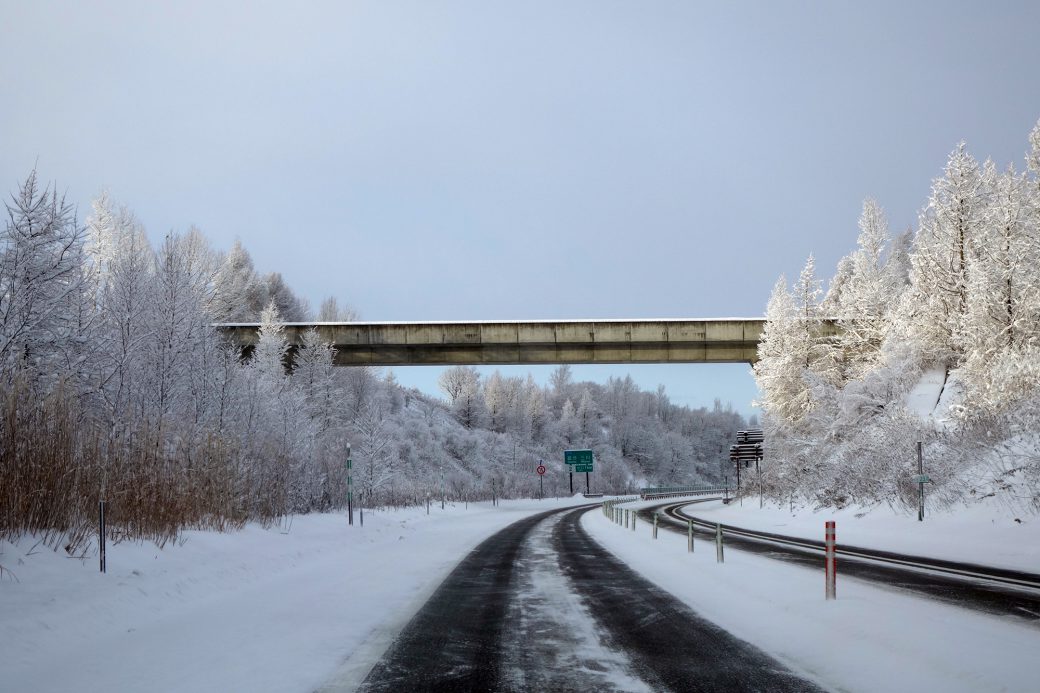
When you go on a self-driving tour of Hokkaido, using the expressway can be a fast and convenient option for traveling the long distances between cities. Since expressways have no traffic lights and heavy traffic is very rare, using them wisely can significantly shorten your travel times, giving you more time to explore and enjoy your destination. While some sections of the expressway can be used for free, most are subject to a toll that you have to pay at tollgates. This article explains how to use the expressway when traveling in Hokkaido.
Before entering the expressway
Before you enter the expressway, make sure to take note of the following items:
- Check your car’s fuel gauge. There are not many gas stations inside the expressway in Hokkaido. If your gas tank is less than half full, it is advisable to fill up before entering the expressway.
- Remember the name of your entrance and exit points (known as interchanges or IC), as well as the direction to your destination. If you are using a car navigation system, keep in mind that it may set a route that does not use the expressway depending on its settings.
- If you are using an ETC card (see below), make sure that the ETC card is inserted properly into the ETC device in your car. Most devices have a lamp that will light up in green if the card is usable. Note that if the card is not inserted properly, the tollgate bar will not open on the ETC lane.
Using an ETC card
The ETC (electronic toll collection) card is a smart card that lets you pay toll fees automatically on the expressway. To use it, your car must be equipped with an ETC device. You must insert the card properly into the device, and you must use the ETC lane when entering and exiting the expressway. When you use an ETC card, you get charged cheaper toll fees, and you can pass through tollgates without the hassle of stopping your car to make the payment. Many car rental companies offer ETC cards as an optional extra, so make sure to include it in your reservation, or inquire at the reception counter of the car rental shop.
Hokkaido Expressway Pass
The Hokkaido Expressway Pass is a special pass that allows unlimited use of Hokkaido’s expressways for a flat rate. It makes use of the ETC system, and is available exclusively to foreign visitors. The price depends on the number of days you plan to use the pass, and it may be the more economical option if you plan to travel long distances using the expressway over several days. The pass is available at most car rental companies, so you should include it in your reservation or inquire at their reception counter. For more information, visit the Hokkaido Expressway Pass website.
Using the expressway
Now that you’re all set, follow the procedure below to use the expressway.
-
From the public road, enter the expressway entrance road. Expressway entrances are marked with green signboards.
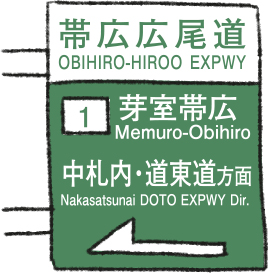
-
The tollgate will have general use lanes, ETC lanes, and dual use lanes. If you are paying with cash or credit card, enter the green general lane, usually marked in Japanese as 一般 (ippan). You will need to get a ticket from the toll booth machine for the bar to open. Do not lose this ticket.
If you are using an ETC card or the Hokkaido Expressway Pass, enter the purple ETC lane. Make sure to slow down to 20 km/h or below, and the bar should open automatically.
If you enter the wrong lane by mistake or there is a problem with your ETC card and the bar does not open, do not reverse your car. Wait for the staff to come and assist you.
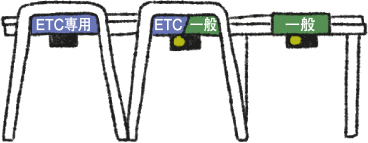
-
After passing through the gate, the road will usually split into two directions (unless you are entering from a terminal interchange). Choose the lane that leads to your destination. The signboards normally indicate the name of a major city, so it is a good idea to check in advance the geographical location of the place you want to go to.
If you enter the wrong lane by mistake, do not reverse or turn around and drive the wrong way. Proceed to the expressway and exit at the next interchange, then start over again.
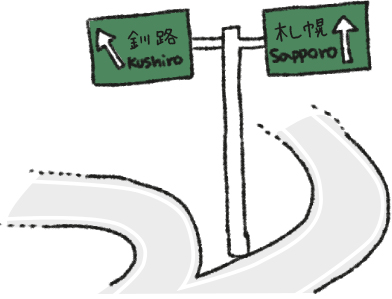
-
Take note of the speed limit as you drive along the expressway. The expressway speed limit in Hokkaido is usually 70 or 80 km/h, though this may become lower depending on the road and weather conditions. If the expressway has two or more lanes, you should stay in the cruising lane on the left-hand side under normal conditions.
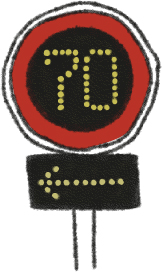
Along the expressway, you may pass along interchanges (IC) and junctions (JCT). Interchanges are entrance/exit ramps, while junctions refer to points where two or more expressways meet and branch off. There are also service areas (SA) and parking areas (PA) where you can stop to rest and make use of other facilities (see below). Signboards are usually posted 2 kilometers and 1 kilometer before each IC, JCT, SA, and PA.
If there is a road closure in the expressway (due to an accident or weather conditions), you need to get off at an interchange before the closure and use the public road to get to the next interchange where the expressway is usable again.
- When you reach your destination interchange, slow down and enter the exit ramp. You should arrive at an exit tollgate at the end of the ramp.
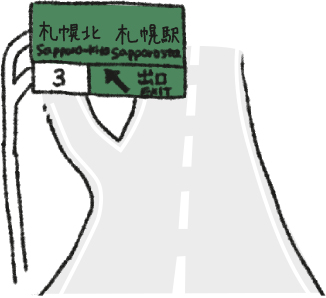 At the exit tollgate, pass through the same lane that you used at the entrance (either the general or ETC lane). If you use the general lane, pass the ticket to the attendant and pay the toll using cash or your credit card. If you use the ETC lane, slow down to 20 km/h or below, and the bar should open automatically. If you enter the wrong lane by mistake or there is a problem with your ETC card and the bar does not open, do not reverse your car. Wait for the staff to come and assist you.
At the exit tollgate, pass through the same lane that you used at the entrance (either the general or ETC lane). If you use the general lane, pass the ticket to the attendant and pay the toll using cash or your credit card. If you use the ETC lane, slow down to 20 km/h or below, and the bar should open automatically. If you enter the wrong lane by mistake or there is a problem with your ETC card and the bar does not open, do not reverse your car. Wait for the staff to come and assist you.
Service Areas and Parking Areas
Service Areas (SA) and Parking Areas (PA) are convenient rest facilities built along the expressway. There is no clear cut difference between the two, and most SAs and PAs offer the following services:
・Parking spaces for regular and large vehicles.
・Toilets and vending machines usable 24 hours a day.
・Restaurants and shops that sell local food and products.
・Free Wi-Fi Internet service.
・Gas stations (available only at Wattsu PA, Sunagawa SA, Usuzan SA, and Yuni PA).
For more information on Japan expressways, visit the E-NEXCO Drive Plaza website.
Note: Information is correct as of January 2019.

